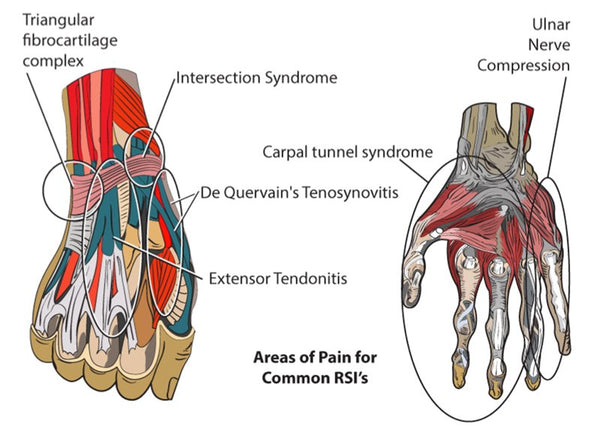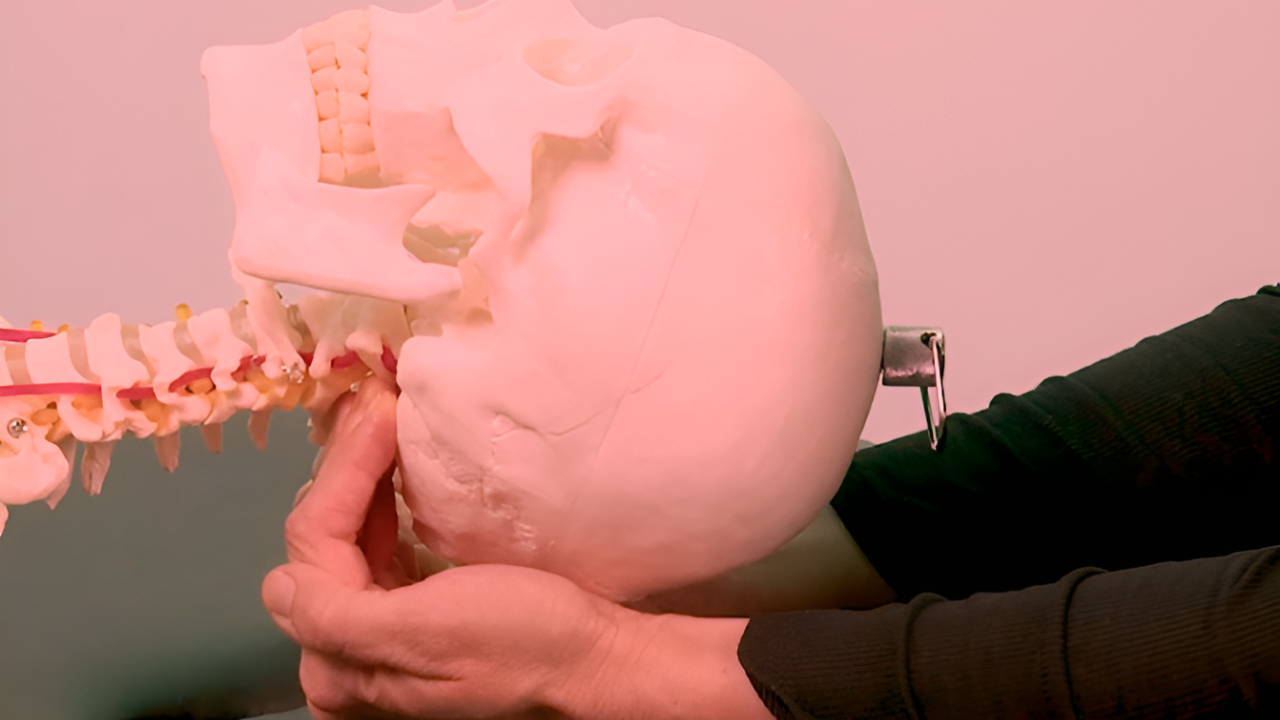Carpal Tunnel Syndrome | Soft Tissue Therapy | Trigger Point Release

Early recognition and effective action has a significant impact on recovery time
CTS is a terribly debilitating and frustrating condition and although we do see more and more referrals from medical doctors, it is a sad fact that many MD's simply have no idea of how effective trigger point and other therapies can be for relieving the symptoms of CTS and many other common RSI conditions.
Carpal Tunnel Syndrome - Treatment Overview
Repetitive Strain Injuries (RSI)
The term RSI is generally considered an umbrella term for a number of upper limb disorders. There has been a massive increase in RSI over the past few decades most likely due to an increase in intense static activities.
More people are using computers, workplace stress is increasing, mobile communications are increasing, and use of smart-phones and tablets is increasing. However, there is little agreement as to the diagnosis of conditions.
There are a plethora of medical terms used to describe RSI, often resulting in confusion and frustration for the patient and practitioner alike.
Basically there are two significant groups of RSI conditions, often known as
Type 1 RSI and Type 2 RSI. Type 1 RSI conditions have a tangible pathology (i.e., measurable evidence in the form of swelling, deformation, dysfunction, etc.).
Type 2 RSI conditions do not have clear pathology, and consequently some medical professionals do not recognize them.
Type 2 RSI is also known as “Work Related Upper Limb Disorders” (WRULD). Other terms used for Type 2 RSI conditions include “diffuse RSI,” “cumulative trauma disorder,” “occupational overuse syndrome,” “non-specific pain syndrome,” “non-specific arm pain,” and “myofascial pain syndrome.”
RSI is associated with trigger points in both wrist flexors and/or extensor (especially Extensor Carpi Radialis Brevis) muscles.
Early recognition and effective action has a significant impact on recovery time. The longer it has been there, the harder it is to treat. Added to this, the rest of the body is forced to compromise or adapt, often leading to secondary and tertiary mechanical issues.
Recovery in some cases can be achieved in a few months, but it is often measured in years. Recovery can also come in stages, allowing a gradual return to normal activity. Note – Full recovery is not always possible.

Carpal Tunnel Syndrome (CTS)
One of the most common forms of RSI that we see in our clinics is Carpal Tunnel Syndrome (CTS).
This is a condition that occurs when the median nerve is restricted. The carpal tunnel is located on the palm side of the wrist and it protects the median nerve, the main nerve that enables finger flexion.
People who suffer from CTS will generally experience numbness or tingling of the thumb and fingers, particularly the index and middle fingers, as they receive sensation from the median nerve.
If pain is felt in all fingers except the little finger, it could be an indicator of CTS. It is known for these sensations to develop gradually but worsen at night.
This is often from sleeping with the wrists flexed or sleeping on one side. In severe cases, patients might experience a weakness in the hand and be prone to drop objects. Some people may also suffer from a dull ache in their hand and elbow.
Causes and Contributing Factors
Generally any pressure on the median nerve, which makes the carpal tunnel smaller, is the primary cause for this condition.
Contributing factors to CTS may include underlying health problems such as diabetes, obesity hypothyroidism, rheumatoid arthritis, and pregnancy.
In other cases, the cause is a result of the anatomy of the wrist, specifically a narrow-diameter carpal tunnel.
Another common cause is an injury to the hand that causes internal scarring or misaligned wrist bones. Often overuse of the hand and arm has been connected to CTS.
This typically refers to heavy manual work with vibrating tools, or other highly repetitive tasks even if they involve low- force motions, and also possibly work in cold temperatures.
Other people at risk include those who work repeatedly on a computer, such as typists and customer service representatives who deal with key entry, as well as grocery line workers, packers in the meat and fish industry, musicians, and mechanics, as their work entails gripping with their wrist bent.
For the same reason, we see many patients whose CTS has developed as a result of hobbies such as gardening, needlework, golfing, and canoeing.
Pregnancy is another co-morbid factor for CTS, and smoking has also been found to contribute to CTS as it limits the blood flow to the median nerve.
CTS is more commonly found in women than men. In the US, it has been noted that three in 100 men and five in 100 women experience CTS at some point in their lives. CTS is typically increased with age; however, it can affect all ages.
In addition, it is known to be hereditary, which suggests that the origin is likely to be genetic.
Trigger Points
Carpal Tunnel Syndrome may more often be caused by trigger points than by anatomical or structural malformations.
The muscle tension created by trigger points will frequently compress nerves as they travel in the neck, shoulder, and forearm regions, and produce the symptoms commonly associated with these upper limb disorders.
There are a number of muscles that can contain trigger points that produce wrist pain and/or numbness in the hand or fingers. The following four muscles are the most commonly involved.
Trigger points are common in carpal tunnel syndrome. The main trigger points to look out for are in the Pronator Teres, Upper Trapezius, Infraspinatus, and wrist flexors and extensors.
Links
More Articles About Elbow Pain
Dry Needling for Trigger Points
Certify as a Trigger Point Therapist
NAT Education Membership Plans - from $19.95/monthly

JOIN NOW
Online Education Plans for Massage and Manual Therapists
Unlimited Access to All NAT Courses and Certification Online
$19.95/monthly
This trigger point therapy blog is intended to be used for information purposes only and is not intended to be used for medical diagnosis or treatment or to substitute for a medical diagnosis and/or treatment rendered or prescribed by a physician or competent healthcare professional. This information is designed as educational material, but should not be taken as a recommendation for treatment of any particular person or patient. Always consult your physician if you think you need treatment or if you feel unwell.

Learn More for Less

Unlimited access to all courses for just $19.95/mo











